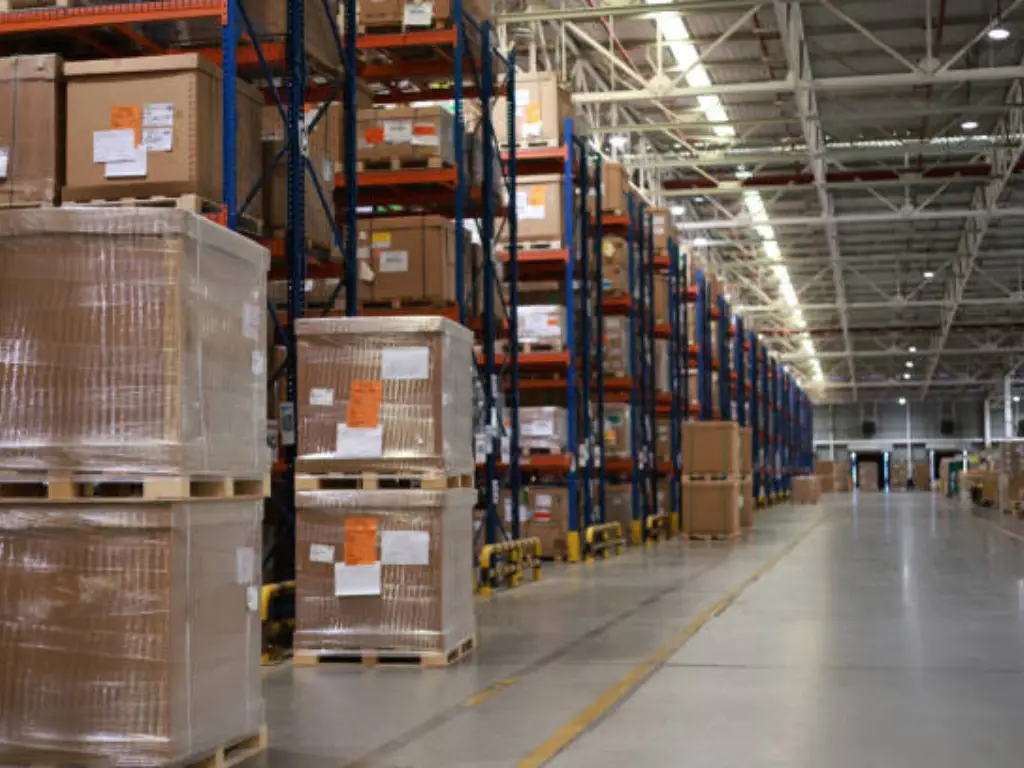Introduction
The language we use is significant in business operations. Words characterize our actions and form our strategies. Sourcing and procurement are two such words that are commonly used interchangeably but have very different strategic implications. To confuse them is to misinterpret the connection between high-level strategy and day-to-day operational work.
It is not merely a semantic problem. In the case of any modern business, particularly those that operate in the competitive e-commerce industry, it is essential to be aware of the major distinctions between these terms. It is the initial step to the development of a resilient, cost-effective, and genuinely effective supply chain. This guide will help to define the difference and justify why this knowledge is such an important competitive advantage.
What’s the Real Difference Between Sourcing and Procurement?
Fundamentally, the difference is between strategy and process, between foresight and implementation.

Consider it like this: Sourcing is the strategic activity of identifying who to purchase from. The general process of how you buy is procurement.
The upstream work is sourcing. It is the intelligence, the market research, the networking. It is about the big questions: Who are the world suppliers who can make our product to the correct quality? Who provides the most value, not the cheapest? Who will be a long-term innovation and growth partner? It is the game of chess, where you predict the changes in the market and eliminate the risks of the supply chain before they happen. (Not sure what sourcing really means? Click here for a clear explanation:
https://www.speedbeedropship.com/what-is-sourcing/)
Procurement, however, is the whole end-to-end procurement process. It encompasses sourcing as its most important initial step, but goes much further. It includes the tactical, day-to-day operations that introduce goods and services into the business: the generation of purchase requisitions, the issuance of a purchase order, the management of invoices, and the management of logistics. When sourcing is the blueprint, procurement is the building of the whole building, including the foundation, and the lights.
| Aspect | Sourcing | Procurement |
| Primary Focus | Strategic & Proactive | Tactical & Operational |
| Core Goal | Find the best possible value & build supplier relationships. | Ensure a smooth, compliant, and efficient acquisition of goods. |
| Key Activities | Market research, supplier discovery, RFP/RFQ, negotiation. | Sourcing, requisition, purchasing, receiving, payment processing. |
| Time Horizon | Long-term, relationship-focused. | Short-term to long-term, transaction and process-focused. |
| Analogy | The Architect (Designing the plan) | The General Contractor (Overseeing the entire project) |
Understanding this clears the fog. You begin to see your supply chain not as a single, monolithic function, but as a series of interconnected, yet distinct, disciplines.
Strategic Sourcing: The Foundation of Competitive Advantage
Strategic sourcing goes beyond just looking for the best deal. It is a research-based approach to sourcing that businesses use to gain a competitive edge and build their frameworks upon. In today’s fast-paced world, it sets your business apart from the rest; poorly managed sourcing will make you lag behind, while well-managed sourcing can drive you ahead.
Key Activities: From Market Research to Negotiation
The sourcing process is a rigorous journey of discovery and due diligence. It involves a series of critical activities:
| Key Sourcing Step | Description |
| 1. Market Research & Analysis | The sourcing process begins with comprehensive market research. This includes identifying potential suppliers, evaluating pricing trends, analyzing raw material costs, and assessing geopolitical or supply chain risks. |
| 2. Defining Business Needs | A clear understanding of internal requirements is essential. This step involves working closely with stakeholders to define product specifications, service levels, and business priorities. |
| 3. Supplier Discovery and Vetting | Companies issue RFIs, RFPs, or RFQs to explore the vendor landscape. They gather information about potential suppliers and evaluate their initial capabilities and responsiveness. |
| 4. Supplier Selection | Based on responses and further analysis, suppliers are evaluated holistically—considering pricing, performance history, financial health, scalability, ethical practices, and sustainability commitments. |
| 5. Negotiation & Contract Management | After selecting a supplier, negotiation begins on pricing, delivery terms, service levels, and payment conditions. Finalized agreements are then formalized through contract management to ensure compliance and value capture. |
The Goal: Beyond Lowest Price to Best Value (TCO)

One of the rookie errors in sourcing is to be lured by the lowest unit price. An experienced professional understands that the sticker price is only the tip of the iceberg. The real objective of strategic sourcing is to attain minimum Total Cost of Ownership (TCO).
TCO considers all the costs of a purchase in its lifecycle. This includes:
| Cost Category | Description |
| Acquisition Costs | Includes the initial purchase price, shipping fees, taxes, and import duties incurred at the time of procurement. |
| Operating Costs | Covers ongoing expenses such as energy consumption, routine maintenance, spare parts, and staff training required to use the product effectively. |
| Quality Costs | Represents the costs of poor quality—such as product defects, returns, rework, and warranty claims. Low-cost suppliers can lead to high quality-related expenses. |
| Risk Costs | Encompasses the potential financial losses from supply chain disruptions, such as delayed shipments, supplier bankruptcy, or geopolitical instability. |
When you concentrate on TCO, you shift your thinking to a strategic perspective. You do not want a low-cost supplier, but a good partner that will help you be cost-effective and build a positive brand image.
The Procurement Cycle: From Requisition to Payment (P2P)
Procurement cycle is the performance, should sourcing be the stage? It is the engine room of the business, making sure that the right goods are in the right place, at the right time and at the right cost. This whole process is commonly referred to as Procure-to-Pay or P2P and is the end-to-end process of an acquisition.
The cycle starts at the point where sourcing ends. When a supplier has been chosen and a contract is signed, the procurement activities come into play. A purchase requisition is made by an internal team member who identifies a need. This is then turned into a formal purchase order (a PO) which is a legally binding contract that is sent to the supplier upon approval.
Then the purchasing process follows: monitoring the order, controlling the lead time, and organizing the delivery of goods. On arrival, the goods are checked against the PO and a receipt is issued. The supplier will then issue an invoice, which is compared with the PO and the receipt (a process called three-way matching) to make sure that it is accurate before the process of payment is started.
To control this general process, modern businesses tend to use procurement software or ERP systems. The most important aspect here is workflow automation software, which can be used to remove manual bottlenecks, provide greater visibility into expenditure, and enforce procurement policies, so that everything is done by the book. (Wondering how the procurement sourcing process works? Click here to learn more: https://www.speedbeedropship.com/procurement-sourcing-process/)
Why This Distinction Matters for Your Business
Sourcing and procurement separation is not merely an organizational activity, but a strategic necessity. When a business considers everything as purchasing, it immerses strategic, high-value activities in the ocean of daily transactions.
Clarity Creates Focus: Separation of the two will allow you to focus your best minds on strategic sourcing, which is negotiating cornerstone deals and developing strong supplier relationships. In the meantime, your procurement team will be able to concentrate on operational excellence: streamlining the P2P cycle to be fast and efficient. This role bridging makes sure that the strategic and tactical aspects of the supply chain management functional role are accorded the attention they require.
Risk Management: Your first line of defense against supply chain disruptions is strategic sourcing. That is where you create redundancy and screen suppliers on financial and operational stability. This is a disaster waiting to happen when it is treated as a tactical exercise.
Cost Savings vs. Cost Efficiency: Sourcing generates deep, structural cost savings through partnering with better partners and negotiating smarter deals. Procurement also leads to cost efficiency by ensuring that the purchasing process itself is leaner and quicker. The two are necessary to really maximize your expenditure. A company that concentrates on procurement efficiency but not strategic sourcing is merely improving its performance of a possibly flawed strategy.
Sourcing Challenges for Ecommerce & Dropshipping Businesses

To entrepreneurs who live in the dynamic environment of ecommerce and dropshipping, these are not theoretical concepts. They are everyday realities and the sourcing issues are especially sharp. A single entrepreneur or a small business owner is usually forced to be both the overall strategist and the day-to-day operator at the same time, unlike large corporations with their own teams.
The online market is a jungle full of potential partners, and full of danger. The following are the most common challenges:
| Challenge | Description |
| Finding Reliable Manufacturers vs. Middlemen | Many suppliers online are trading companies rather than actual factories. They add markups without contributing to product value. Identifying genuine manufacturers requires local insight and due diligence. |
| Meeting High Minimum Order Quantities (MOQs) | Manufacturers often set high MOQs, which can be unrealistic for small businesses or startups. This limits access and pushes many buyers toward more expensive intermediaries. |
| Ensuring Consistent Product Quality from Afar | Maintaining product quality across large batches is difficult when sourcing remotely. A sample may be perfect, but bulk production can deviate significantly without strict quality controls. |
| Navigating Communication Barriers and Complex Negotiations | Language gaps, cultural nuances, and unfamiliar international trade terms can complicate supplier relationships and create room for misalignment or costly mistakes. |
These are not some small nuisances, but existential risks to a dropshipping or ecommerce business. Bad sourcing results in poor products, dissatisfied customers and a brand that never takes off.
(Interested in global sourcing and how it works? Learn more here: https://www.speedbeedropship.com/what-is-global-sourcing/)
Your Solution: Partnering with a Dropshipping Agent
This is where the difference between sourcing and procurement can be a great growth tool. What would happen if you could outsource the whole complex, high stakes game of strategic sourcing and procurement to a specialist? This is exactly what a professional dropshipping agent does.
A professional dropshipping agent is your local sourcing and procurement team. They do not merely take orders, they are strategic partners that address the very sourcing issues that hold back growth of so many ecommerce businesses.
They turn the process of discovery and purchase of a source of risk into a source of strength. Here’s how:
- Expert Sourcing: A high-quality agent possesses a network. They do not simply go through the public directories, they have years of experience and contacts to get you in touch with tested, trusted factories. They do the due diligence and make sure you have the best suppliers to work with who can deliver on quality and price and create you a really reliable supply chain.
- Quality Control: An agent will be your eyes and ears on the factory floor. They also have quality control checks during the production process and not only on the end product. This active supplier management will be consistent and safeguard your brand image.
- Streamlined Procurement: The agent does all the procurement process on your behalf. They provide a smooth P2P solution, including taking the order, inventory management, professional packing, and shipping. This automation of complicated processes relieves you of logistical nightmares. We turn your sourcing problems into a competitive advantage at SpeedBee and you can concentrate on what you do best: marketing and expanding your brand. Find out about our agent services.
Key Takeaways: Sourcing is the Strategy, Procurement is the Process
As we have discussed, the process of obtaining goods and services is a complex process that extends well beyond one function. The difference between sourcing and procurement is crucial to the development of a robust and cost-efficient supply chain. Sourcing is the proactive, data-driven, strategic pursuit of value to develop long-term, mutually beneficial relationships with suppliers. Procurement, however, is the practical implementation of buying, including all the processes involved in making orders, payment and delivery. The two are easily confused and this can result in lost opportunities as businesses run the risk of focusing on short-term transactions at the expense of long-term strategy, which in turn exposes them to greater levels of disruption and cost. This difference is particularly important in ecommerce where the involvement of a professional, e.g. an experienced dropshipping agent, can introduce clarity and efficiency to both sourcing and procurement, without the overhead of in-house expertise.
Ready to Optimize Your Product Sourcing?
Now you understand clearly the distinction between sourcing and procurement, and why both are critical to the development of a robust, cost-effective supply chain. You know both the typical problems and the opportunities. The second thing is to choose how you are going to do it. You may handle the complexities of global sourcing yourself, or you can collaborate with an experienced partner who already knows the process. Sourcing should not slow your business. Make it a competitive advantage. Call SpeedBee today and get a free consultation and begin to create a more reliable, efficient supply chain to your brand.



